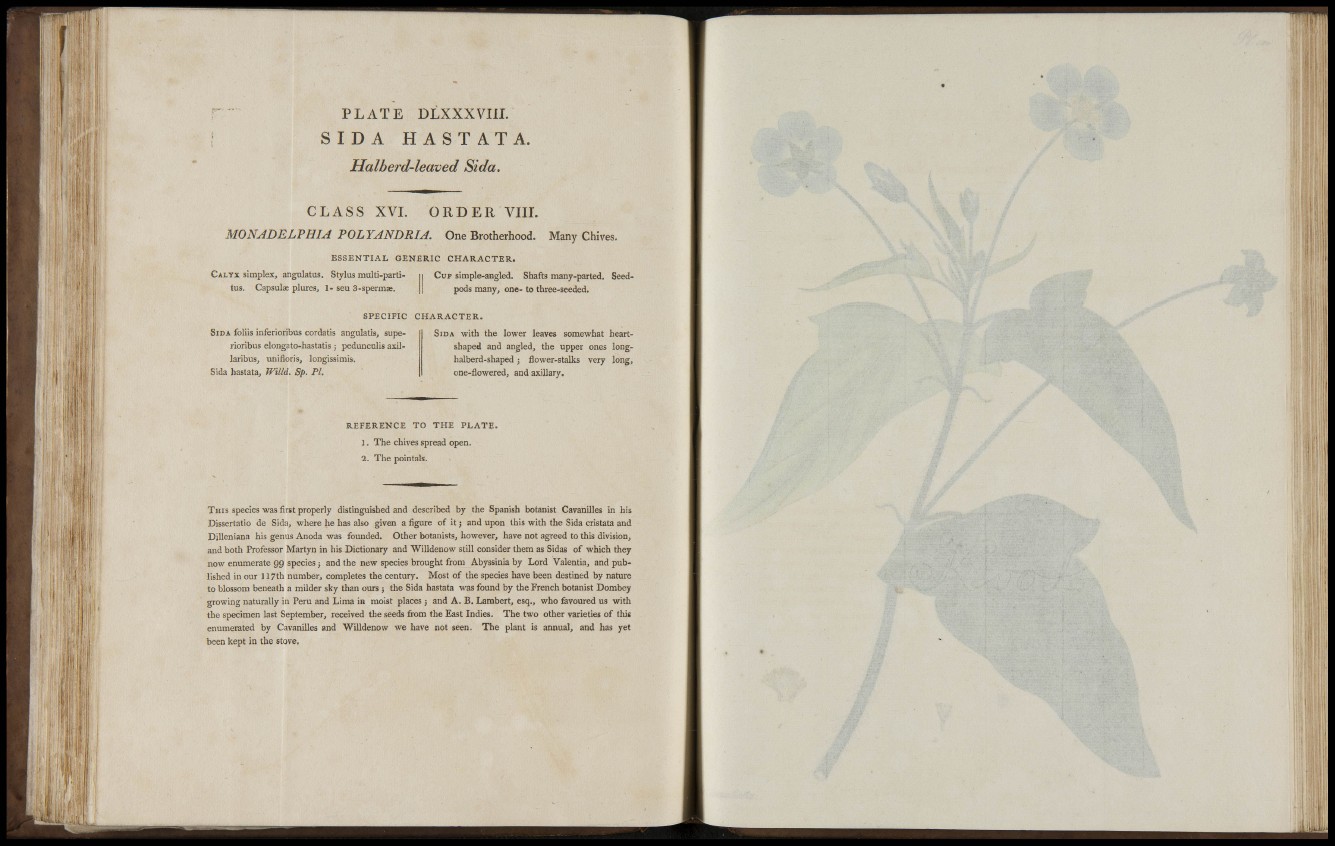
P L A T E DLXXXVIII.
S I D A HASTATA.
Halberd-leaved Sida.
C L A S S XVL ORDER VIIL
MONJDELPHIA POLYANDRIA. One Brotherhood. Many Chives.
ESSENTIAL GENERIC CHARACTER.
Calyx simplex, angulatus. Stylus multi-partitus.
Capsulse plures, 1- seu 3-spermae.
Sida foliis inferioribus cordatis angulatis, superioribus
elongato-hastatis; peduncalis axillaribus,
uniflorisj longissimis.
Sida hastata, Willd. Sp. PL
Cup simple-angled. Shafts many-parted. Seedpods
many, one- to three-seeded.
SPECIFIC CHARACTER.
Sid A with the lower leaves somewhat heartshaped
and angled, the upper ones longhalberd
shaped; flower-stalks very long,
one-flowered, and axillary.
REFERENCE TO THE PLATE.
1. The chives spread open.
2. The pointals.
T H I S species was first properly distinguished and described by the Spanish botanist Cavanilles in his
Dissertatio de Sida, where he has also given a figure of it j and upon this with the Sida cristata and
Djlleniana his genus Anoda was founded. Other botanists, however, have not agreed to this division,
and both Professor Martyn in his Dictionary and Willdenow still consider them as Sidas of which they
now enumerate 99 species j and the new species brought from Abyssinia by Lord Valentia, and published
in our 117th number, completes the century. Most of the species have been destined by nature
to blossom beneath a milder sky than ours j the Sida hastata was found by the French botanist Dombey
growing naturally in Peru and Lima in moist places 5 and A. B. Lambert, esq., who favoured us with
the specimen last September, received the seeds from the East Indies. The two other varieties of this
enumerated by Cavanilles and Willdenow we have not seen. The plant is annual, and has yet
been kept in the stove.
• V 'If
liiiE
¡E'i
1
i
l l K
Í
«
1.' f